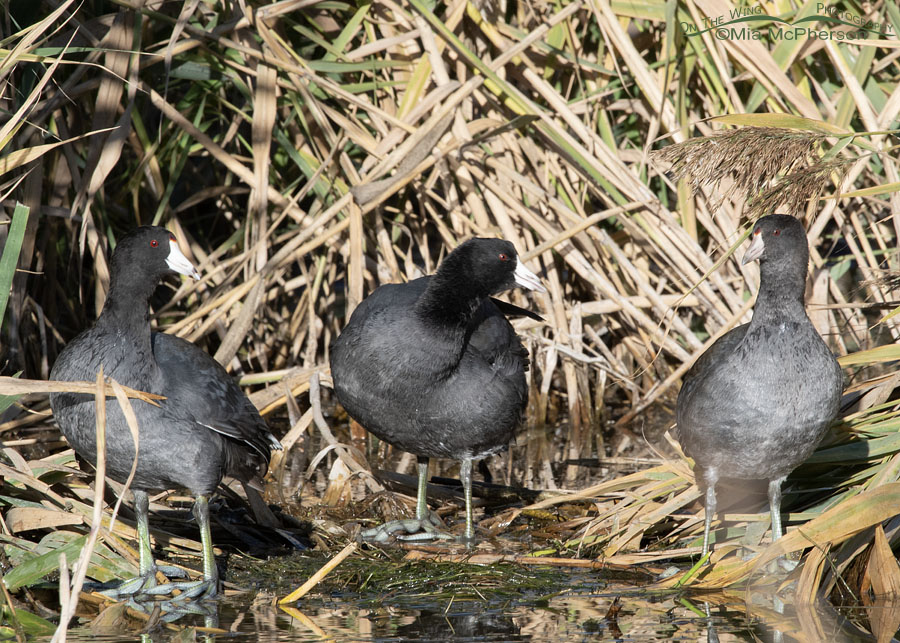What’s better than having one coot in my viewfinder? I’d say having three American Coots side by side in my viewfinder at one time!
 Three American Coots in autumn – Nikon D500, f18, 1/200, ISO 640, Nikkor 500mm VR with 1.4x TC, natural light
Three American Coots in autumn – Nikon D500, f18, 1/200, ISO 640, Nikkor 500mm VR with 1.4x TC, natural light
I spotted these three coots while I was on the auto tour loop at Bear River MBR last Monday. When I parked my Jeep across the water from them, I could see that they were preening. I waited, hoping that I could get eye contact with all three coots, and I was able to capture that in a few of the photos I took.
Two of the coots in this photo are adults, one is a hatch-year bird. Can you tell which is the younger coot?
I’ll give you a few clues.
The bills of the adults are ivory white, and the spots near the tip of their bills are dark grayish-brown. The younger bird’s bill is more pinkish-white, and the spots near the tip of its bill are lighter gray. Additionally, the younger bird has slightly lighter plumage than the adults on its breast, neck, and head.
Have you figured out which coot is the hatch-year bird?
Yes, you’ve got it; it’s the coot on the right!
I’ve been watching the American Coots at one of the ponds close to home for the past several weeks during my walks. Their numbers are increasing on the pond, and, wow, they’re getting feisty. There have been quite a few coot chases and a few serious-looking fights.
I’ve also been looking for the leucistic American Coot that I found and shared at the pond in January of this year, but so far I haven’t seen it.
As abundant as American Coots are, I don’t often pass on the opportunity to photograph them. I like these coots too much to let them go unnoticed.
Life is good.
Mia
Click here to view more of my American Coot photos plus facts and information about this species.


I figured it out right away. I also like costs. They are fascinating bird with the most excellent feet!
A trifecta of coots! 💜💜💜
Triple the fun.
This is a great photo! And thanks for the tips on identifying the hatch-year bird.
Thank you Mia!